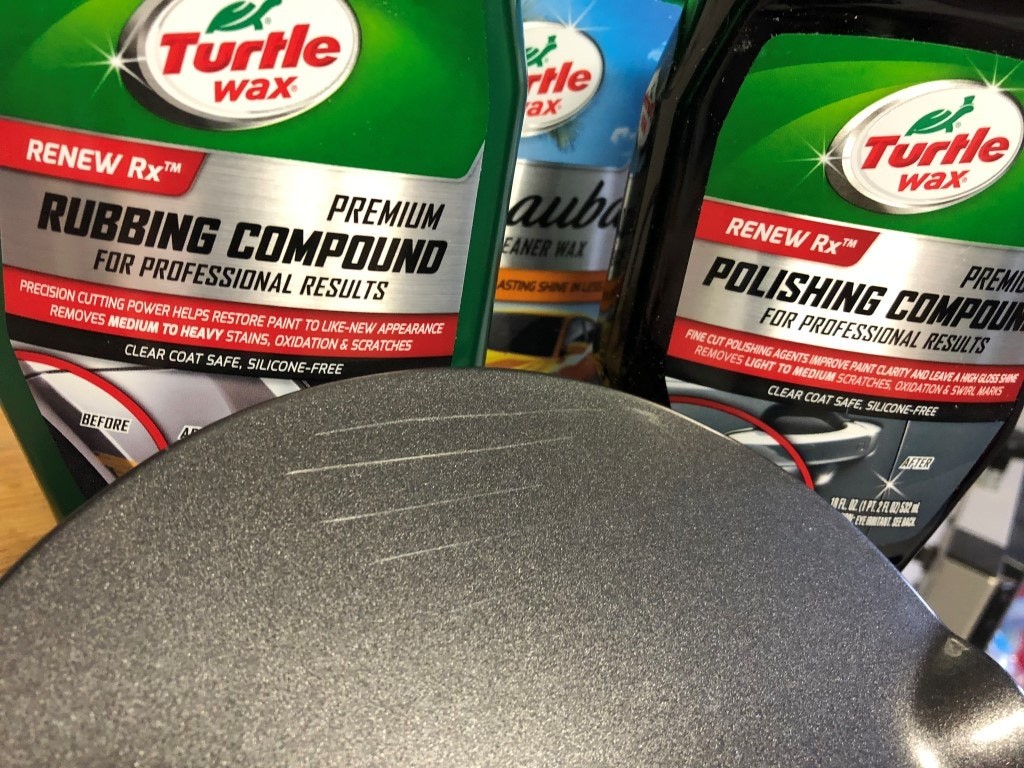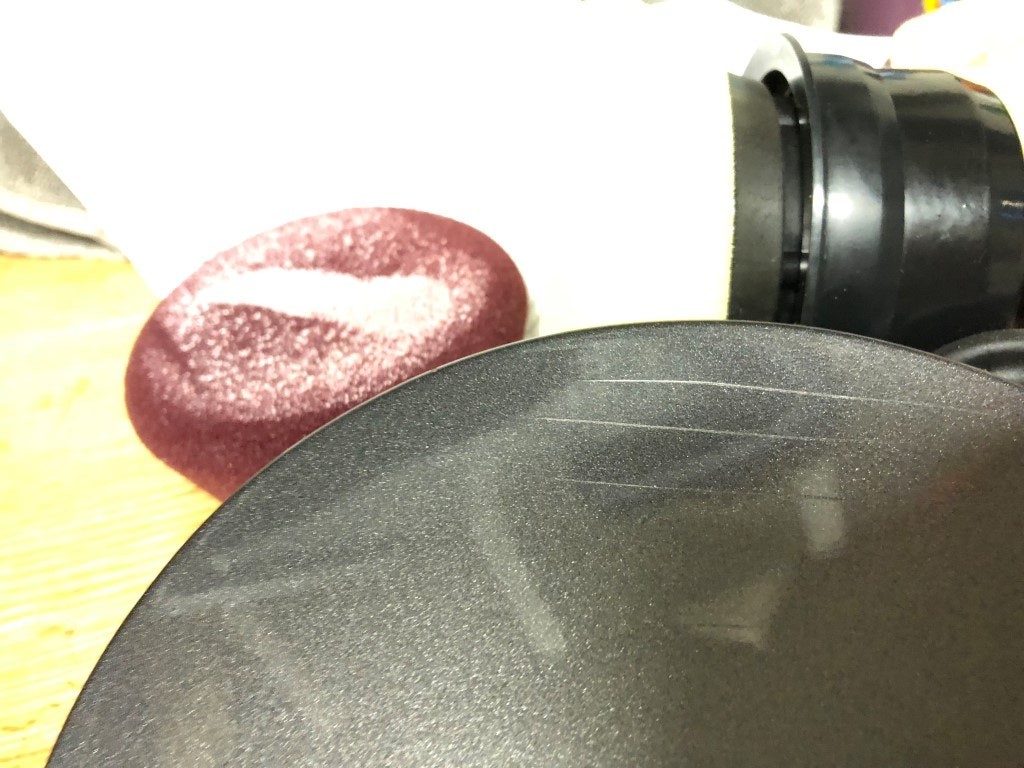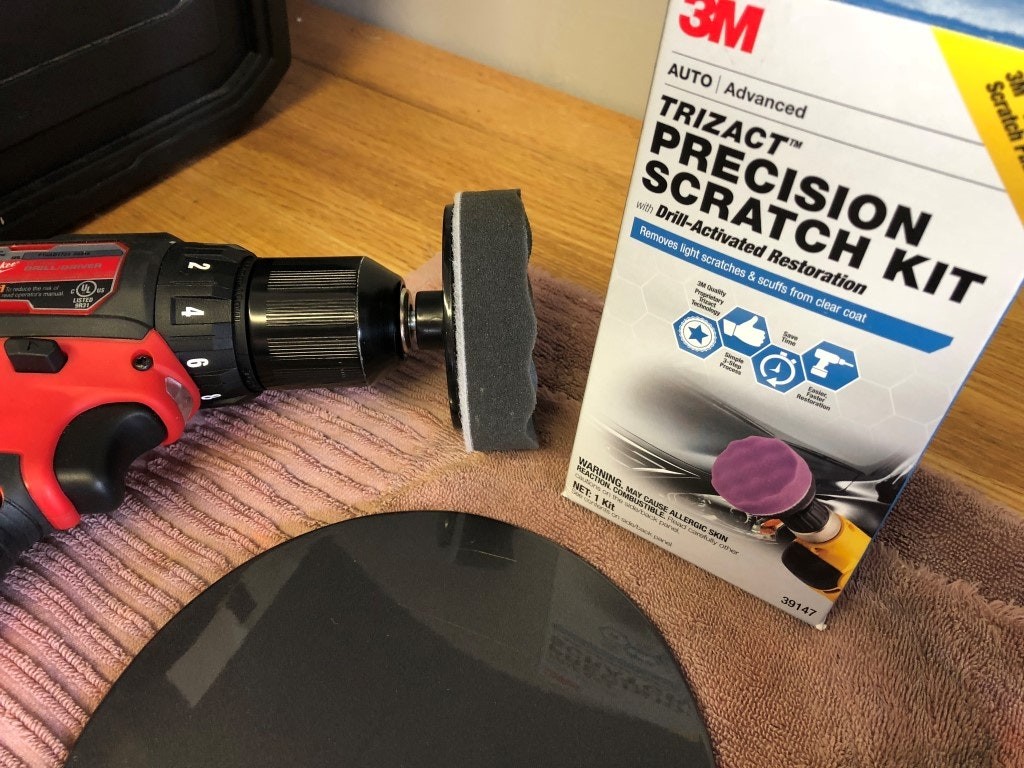Car scuffs and scratches are an unfortunate reality for vehicle owners. Whether it’s a minor scrape from a shopping cart or a deeper scratch from road debris, these blemishes can detract from your car’s appearance and value. While professional auto body shops can handle significant damage, many minor scuffs and scratches can be effectively repaired at home, saving you time and money. This guide explores various DIY Car Scuff Repair methods, product tests, and expert advice to help you restore your car’s finish.
For deeper paint damage that goes beyond a simple scuff, merely polishing the area won’t suffice. If a scratch remains visible even when wet, it necessitates a more abrasive approach, such as sanding. This involves physically removing a thin layer of the clear coat or paint using sandpaper. You can opt for manual sanding or utilize a mechanical sander, with numerous techniques and products available for both. For the most severe scratches, the process may require filling the groove with specialized fillers like Bondo, followed by sanding and polishing to achieve a smooth, seamless repair.
To assess the effectiveness of different repair products, a practical test was conducted on a scrap car panel obtained from a junkyard. The panel was intentionally scratched with varying depths using a box cutter to simulate real-world car scuffs. Products from several leading brands were then tested to determine their scratch removal capabilities.
The first test focused on entry-level products from Turtle Wax, including Rubbing Compound, Polishing Compound, Scratch & Swirl Remover, and Carnauba Liquid Wax. These products, totaling approximately $20, share a similar runny white consistency and are applied with a cloth. While this Turtle Wax combination demonstrated a modest ability to minimize the appearance of very light surface scuffs from a distance, closer inspection and typical lighting conditions revealed that even minor scratches remained noticeable.
 Turtle Wax products test results
Turtle Wax products test results
Moving to a slightly higher tier, Meguiar’s Ultimate Compound, Polish, and Liquid Wax were tested on the same set of scratches. This Meguiar’s trio, costing around $35, was also applied manually. The results showed only a slight improvement over the Turtle Wax products. According to car care experts, machine application becomes necessary for more effective scratch and scuff removal when manual effort proves insufficient after a few attempts.
The test results took a significant turn when Meguiar’s DA Power System, priced at $54, was introduced. This rotary polishing system attaches to a standard drill and employs an orbital motion for more consistent coverage. The DA system, leveraging electric power, markedly improved the repair outcome. Lighter scuffs became virtually undetectable, although moderate to deeper scratches still remained somewhat visible.
 Meguiar's DA Power System results
Meguiar's DA Power System results
The limited success of basic polishing products, even with machine assistance, highlights a crucial aspect of car scuff repair. As explained by Kevin Ansell, a senior engineer at 3M (which owns Meguiar’s), many products aim to reduce the visibility of scratches rather than completely eliminate them. To effectively address deeper scuffs and scratches, sanding is often essential. For the test scratches, especially the deeper ones, Ansell recommended the 3M Trizact Precision Scratch Kit, an all-inclusive system designed for drill-powered application and intended for light to medium scratch removal. This kit, priced around $20, employs a three-step process: manual sanding with specialized sandpaper, application of rubbing compound using a drill attachment, and finally, polish application, again with a drill attachment.
Sanding the car’s clear coat can initially seem daunting, but it quickly became apparent that this step was necessary to achieve substantial improvement on most of the test scratches. The Trizact sandpaper proved highly effective. After a brief period of wet sanding, significant progress was made on moderate scratches. While sanding created a hazy, matte finish by removing the glossy clear coat layer, the subsequent buffing with compound and polish, using the provided drill attachments, restored the shine. The 3M system effectively eliminated light scratches, and moderate scratches became nearly invisible. Even deep scratches showed noticeable improvement, although they were still somewhat apparent.
 3M Trizact Precision Scratch Kit results
3M Trizact Precision Scratch Kit results
A minor drawback of the 3M Trizact kit is that while the drill pads are reusable, the rubbing compound and polish are packaged in non-resealable packets, limiting their reusability. Additionally, the provided sandpaper squares are quite small, measuring only 2 inches, which can be somewhat cumbersome to handle and may wear out quickly.
In conclusion, repairing car scuffs and scratches effectively often requires a multi-step approach, especially for damage beyond very light surface blemishes. While basic polishing compounds can improve minor scuffs, more substantial repairs often necessitate sanding to level the damaged area, followed by compounding and polishing to restore the paint’s shine. Products like the 3M Trizact Precision Scratch Kit offer a comprehensive DIY solution, providing the necessary tools and materials for effective car scuff repair. For deeper scratches and scuffs, professional auto body repair services may be necessary to achieve a flawless finish. Choosing the right approach and products depends on the severity of the scuff and your comfort level with DIY car care.